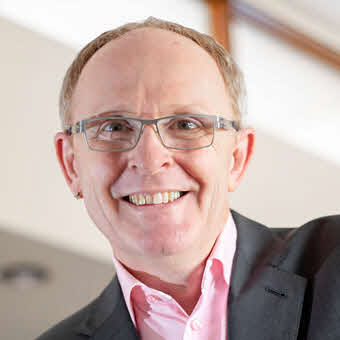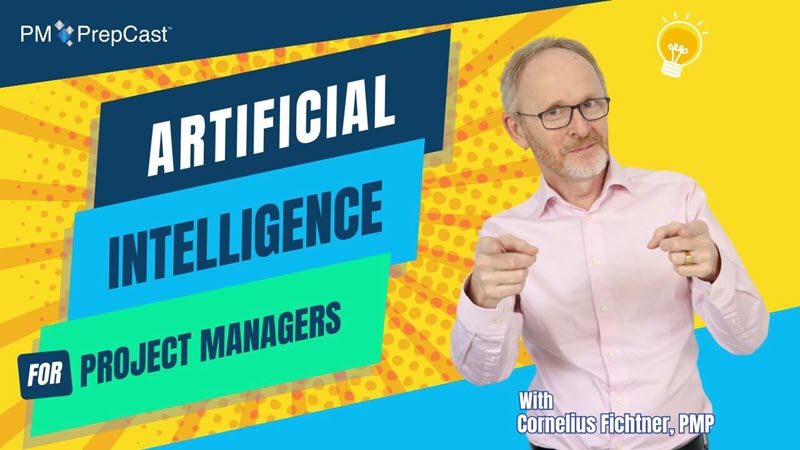Episode 148.4: Risk Management - Critical Success Factor for your Project - Part 4
Part 4. This episode of The PM Podcast is a 4-part webinar presented by Andreas Heilwagen on the topic of risk management.
Each part of this webinar is looking at risk management critical success factors. Andreas says that the effective management of project risk is a critical success factor, and I can see why. We look at a definition of Risk Management, present the value that it offers to your projects, go through the processes offered by The PMBOK® Guide, take a look at the free risk management templates [Update: the template website is no longer available, so we removed the link] offered by Andreas and the look into the success factors that will make your internal risk management approach a winning activity.
Agile project risk management isn't something we go deep into specifically, but risk management is a universal concept. You will be able to take the ideas here and apply them to your agile team environment, if you are using agile methods.
Episode Transcript
Below are the first few pages of the transcript. The complete transcript is available to Premium subscribers only.
Podcast Interview
Cornelius Fichtner: Alright, here we are. We have reached the success factors section of your presentation, Andreas. And the first success factor that you have on the list here is you have to “Recognize the value” of risk management.
Now, people who have watched this presentation, they’ll get it. Those are project managers. They now understand how to do risk management on their project and they see the value of it all. It’s probably not those people that you necessarily meant that have to recognize the value. I assume there are other people that need to recognize the value as well, right?
Andreas Heilwagen: Right! You need to recognize the value on all levels. It starts with all your project team members because they need to support you. They are the specialists who would tell you about risks when you need their input to create good risk response plans.
And of course, you also need support on a C-level because if management which report to knows about risk management and supports it and recognizes the value but the C-level doesn’t, they can talk and talk and talk and nothing happens and they won’t get the budget and the resources to do risk management and to implement risk response plans so it needs to become part of the culture of the company of your project management culture and if you start to introduce risk management into an organization, it’s as complicated as introducing project management itself. Because again, you need to have a sponsor which is very high in the organization and you need to get everybody on your side.
Cornelius Fichtner: Yeah, I was just going to say this is probably not something that a lowly project manager who manages a small project can push through. This is something that needs to come from a higher level, from a PMO level, from a strategic level that risk management is something that we do in our organization. It’s valuable. We need it. Let’s do it and everybody falls in line and understands and recognizes the value of it.
Andreas Heilwagen: And there need to some basic rules which everybody knows because the feeling what is the risk and what is the opportunity is very different between individuals and you need to have some common understanding what a risk and what an opportunity is so it starts with “whats”
Cornelius Fichtner: Yeah. Second one on your list, the “Individual Commitment and Responsibility” for risk management.
Andreas Heilwagen: That’s the next step after recognizing the value. You need to do it yourself and if you see there’s a risk and you’re not a project manager, you need to go to your project manager and tell him: “Hey, I found a risk. Let’s talk about it.” And the project manager needs to say: “Okay, that’s great. Let’s talk about it and let’s get the right people together to get this done and to know what we have to do and we need to be responsible.”
If you’re a risk action owner, it’s very important that you do your job and that the risk response is implemented at the right time.
Cornelius Fichtner: And I assume responsibility and accountability here in this particular sense goes hand and hand, right? If you’re the risk action owner, you are responsible for it and you’re also accountable for making sure that it happens.
Andreas Heilwagen: Ah, the risk action owner is not accountable for the risk.
Cornelius Fichtner: Ah, the risk owner is accountable.
Andreas Heilwagen: The risk action owner is a guy who says “no” and the risk owner says “oops, I’m sorry.”
Cornelius Fichtner: Ah, I get it. So the risk action owner is the person who says “the risk is here”?
Andreas Heilwagen: Yeah! And we will implement the plan.
Cornelius Fichtner: Ah, okay.
Andreas Heilwagen: If you’re sitting in your PMP® Exam, this distinction is not so important. It’s important if you specialize on risk management.
Cornelius Fichtner: Okay. Good. “Open and honest communication” - you know this takes me back to the slide that we saw early on with the three cars. The time, scope, budget; on one slide, they were nicely lined up and then on the next slide, they are totally in disarray and this open and honest communication comes in to place right here at the very beginning where you tell people: “Look, you may feel that everything is good but let me show you what it really looks like.”
Andreas Heilwagen: Yeah. Open and honest communication might be a new way of [shovel] the value so you need to think about the value. You need to think about the value of projects and how you want to run your company. If you’re looking on short-term value, you will have an issue. You can only do a risk management if you have a long-term view of everything and you need to talk openly about the risks and you need to accept that some times it’s better not to do a project. Although if it looks great, some times it’s good not to do it or to do a totally different.
For people it’s very hard not to implement the initial ideas. They love their first idea and it takes a long time for them to accept that maybe it wasn’t such a good thing.
Cornelius Fichtner: There’s another area where I think risk management and a long-term view comes in to play. This has to do with doing something today in risk management to avoid problems in the future.
Because if you are the project manager in a project that needs to develop or that is developing a new product then your job usually begins at the onset: You develop a product and in the end when you’re done, you hand the product over to production and you’re finished, right? That’s your part of the project.
But what you have to think of is you have to think of the future. You have to think of the people in your helpdesk who get calls from customers. So what can you do today to reduce the risks of this product failing, to reduce the risk of your people having to spend hours and hours and hours fixing things and helping customers in order to make it work? So the long-term view here, the open and honest communication internally has to be we have to invest money today in order to save money down the road.
Andreas Heilwagen: It’s about the product lifecycle.
Cornelius Fichtner: Yes.
Andreas Heilwagen: Not only about the short lifecycle. And a lot of people think: “Okay, I’m a project manager. When the project is done, I’m out.” Perhaps a well lesson learned, I will close the project but they have a certain part of responsibility regarding the product lifecycle. And it’s important for all the team members to talk about risks which may occur later as you discuss for example, customer care may have an issue later.
Cornelius Fichtner: Right. The fourth item here on the list is “Scale to the project” or tailor to the project and I’d like to go back to the previous screen here. You know the risk response plan and I asked you, do you have to do all of these from 1.1 to 3.3 together so if you have 300 risks, you do this 300 times and you said: “Yes, if you are a machine, you will do that.”
Because this is what you meant by scaling it, by tailoring it to the project, right? You do what is required on the project. You also said that for instance the quantitative risk response plan, no, the quantitative risk analysis, excuse me, is very usually the first process that you drop out of the processes. Is that what we’re talking about here?
Above are the first few pages of the transcript. The complete PDF transcript is available to Premium subscribers only.
- Last updated on .
- Hits: 26143



